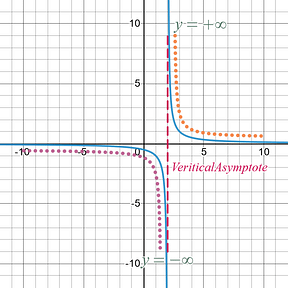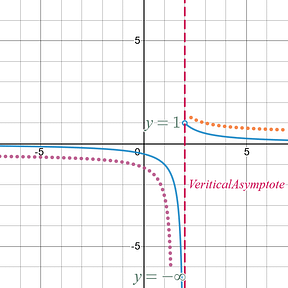Option 9: Vertical Asymptotes (Limits that equal infinity)
If you find yourself unable to apply any of the previous 8 Limit Options; if you can’t seem to get rid of that piece of the equation that is giving you division by zero, then you are most likely looking at a vertical asymptote.
Definition: Vertical Asymptotes
Vertical asymptotes occur at an when the answer to a one-sided limit (left-hand limit or right-hand limit) at that is .
LHL : or
RHL : or
Note:
– The answer to a vertical asymptote question is always the where it is occurring.
– The overall limit does not need to exist in order for there to be a vertical asymptote. The left-hand limit does not need to equal the right-hand limit.

– Only one of the limits (left or right) needs to equal . They both do not need to equal .

– Vertical asymptotes most often occur where you would get division by zero in your equation. They do not always occur there. Remember that if you are able to cancel out a part of an equation, then you have a removeable discontinuity (hole in the graph) not a vertical asymptote.
For Example : In this equation you would have a vertical asymptote at because can’t get rid of that part of the equation. However, you would have a removeable discontinuity at because the terms can be canceled.


